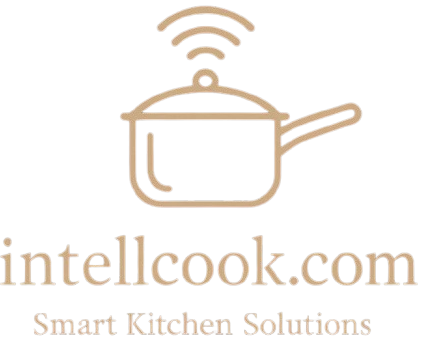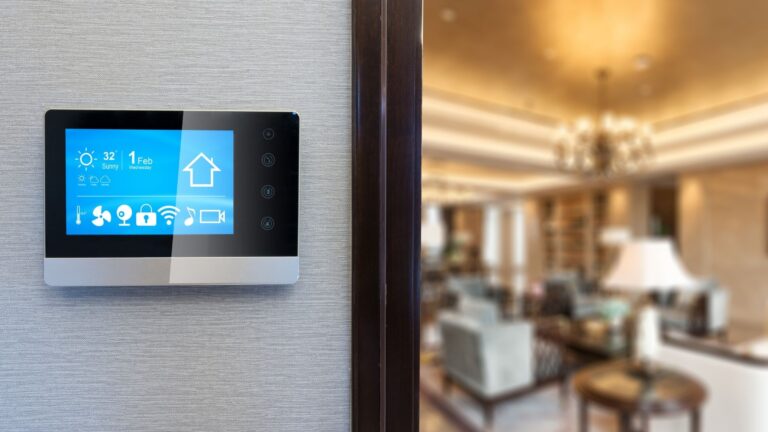The promise of home automation sounds wonderful until you start researching the topic and face overwhelming technical complexity. Countless products flood the market with conflicting compatibility claims and confusing specifications. Forum discussions fill with jargon about protocols, hubs, and integration challenges that make automation seem accessible only to technology experts. This perception prevents many people from enjoying the genuine convenience and efficiency that home automation provides. The reality contradicts this intimidation because modern smart home technology has become remarkably user-friendly for people without any technical background. You can start with simple devices that install in minutes and expand your automation gradually as you become comfortable with the technology. The key lies in understanding which devices deliver the most value for your specific needs rather than trying to automate everything at once. This practical guide walks you through the actual process of automating your home without requiring computer science degrees or professional installation services.
Start With Your Priorities and Pain Points
The biggest mistake people make when approaching home automation involves buying random devices that seem cool without considering whether they solve actual problems or improve daily routines. Begin instead by identifying aspects of your home life that cause regular frustration or waste time. Do you frequently return home after dark to find your house completely unlit? Do you worry about whether you locked doors or turned off appliances after leaving? Does your energy bill seem higher than necessary? Do you struggle to maintain comfortable temperatures as weather changes? These specific challenges point you toward automation that delivers immediate value rather than novelty that loses appeal after the initial excitement fades.
Write down the five most annoying or time-consuming aspects of managing your home. These priorities guide your automation journey and ensure your investments actually improve your life. Someone who constantly worries about home security will prioritize smart locks and cameras. A person who works irregular hours might focus on lighting automation that adapts to their changing schedule. Families with children might emphasize door and window sensors that alert when kids arrive home from school. This focused approach delivers meaningful results quickly which builds enthusiasm for expanding automation to other areas over time.
Another Good Read: Why Smart Plugs Are Useful for Energy Saving
Choose Your Ecosystem Foundation
Your choice of smart home platform influences everything that follows so this decision deserves careful consideration before you purchase devices. The major platforms include Amazon Alexa, Google Home, Apple HomeKit, and Samsung SmartThings. Each ecosystem has strengths and limitations regarding device compatibility, ease of use, and advanced features. Amazon Alexa works with the widest range of third-party devices which gives you maximum flexibility in product selection. Google Home integrates seamlessly with Google services and offers sophisticated voice recognition. Apple HomeKit provides strong privacy protections and works beautifully if you already live within the Apple device ecosystem. Samsung SmartThings supports both Zigbee and Z-Wave protocols which enables connection to devices that other platforms cannot directly control.
Most people find the best results by choosing a platform that matches devices they already own and use daily. If you have iPhones and iPads throughout your household, Apple HomeKit makes sense. If you already use Alexa devices for music and information, building your smart home around that ecosystem creates natural integration. Many modern smart devices work with multiple platforms so your initial choice does not lock you into one system forever. However, starting with a clear primary platform simplifies setup and ensures all your devices can communicate effectively from the beginning.
Begin With Smart Lighting for Immediate Impact
Lighting automation delivers noticeable improvements immediately while costing relatively little and requiring no installation expertise. Smart bulbs simply screw into your existing light fixtures like any regular bulb. You download an app to your phone, follow simple instructions to connect the bulbs to your wireless network, and suddenly control those lights from anywhere. Start with bulbs in rooms you use most frequently like the living room, bedroom, and kitchen. The ability to turn off lights from bed without walking through the dark house provides immediate quality of life improvement. Scheduling lights to turn on before you arrive home eliminates walking into a dark house while also enhancing security by making the property look occupied.
Smart switches and dimmers offer alternative approaches if you prefer to keep your existing bulbs. These devices replace standard wall switches but require slightly more installation effort. You need to turn off power at the breaker and connect wires according to straightforward instructions. Many people feel comfortable handling this basic electrical work themselves while others prefer hiring electricians for peace of mind. Smart switches control all bulbs on a circuit simultaneously which works well for ceiling fixtures with multiple bulbs where replacing each bulb individually would become expensive.
Add Smart Plugs for Versatile Control
Smart plugs provide incredibly flexible automation because they work with any device that connects to standard outlets. These adapters fit between wall sockets and appliance plugs to give you control over power flow. Coffee makers, fans, lamps, phone chargers, and countless other devices become smart through this simple addition. You can schedule a coffee maker to begin brewing before your alarm goes off each morning. Program fans to turn off after you fall asleep rather than running all night. Create the illusion of occupancy by scheduling lamps to turn on and off when you travel.
Smart plugs cost less than most other smart home devices which makes them perfect for experimenting with automation before making larger investments. Buy two or three plugs initially and try them with different devices to discover which applications improve your routines most effectively. The ease of moving smart plugs between outlets and devices encourages experimentation that helps you understand automation principles without any risk or complexity.
Smart Thermostats for Comfort and Savings
Climate control represents one of the largest home expenses which makes smart thermostats attractive investments that pay for themselves through energy savings. Modern smart thermostats learn your schedule and preferences then automatically adjust temperatures to match your patterns. The devices detect when you leave home and shift to energy-saving temperatures. They anticipate your return and bring the house back to comfortable conditions before you arrive. This automated adjustment eliminates wasted energy from heating or cooling empty houses while ensuring comfort when you actually occupy spaces.
Installation varies by model but most homeowners can replace existing thermostats themselves by following included instructions. You typically need to turn off power to your HVAC system, remove the old thermostat, connect wires to the new unit according to clearly labeled terminals, and restore power. The smart thermostat then walks you through network connection and initial setup via its touchscreen interface. Some systems offer free professional installation which eliminates any concerns about tackling the project yourself. The combination of energy savings, improved comfort, and remote control through your phone makes smart thermostats among the highest-value automation investments available.
Door Locks and Security Basics
Smart locks transform home security by eliminating keys and enabling remote control over who can enter your property. You can unlock doors from anywhere to grant access to family members, guests, or service providers without being physically present. Temporary access codes allow housekeepers or contractors to enter during specific time windows then automatically expire. The locks log who enters and when which provides peace of mind and accountability. You never again need to wonder whether you locked the door because your phone confirms the status instantly.
Installation requires modest DIY skills because you replace the interior portion of existing deadbolts while keeping the exterior keyhole unchanged. Most smart locks include detailed instructions with photos or videos that guide you through the process step by step. You need only basic tools like screwdrivers and perhaps thirty minutes of time. Some locks operate purely through network control while others include keypads on the exterior for code entry. Consider your preferences regarding whether you want to carry phone keys exclusively or maintain number pad backup options.
Creating Your First Automation Routines
Individual smart device control provides convenience but automated routines deliver the real magic of a smart home. Routines coordinate multiple devices to accomplish complex tasks through single triggers. Start with simple routines that solve specific problems you identified earlier. A morning routine might gradually brighten bedroom lights over ten minutes to wake you naturally, then turn on the coffee maker and adjust the thermostat to comfortable temperatures. This sequence happens automatically at your wake time without any input beyond the initial setup.
Evening routines can prepare your home for sleep by locking doors, turning off most lights except nightlights, adjusting thermostats, and arming security monitoring. Arrival home routines unlock doors as you approach, turn on lights, and adjust climate control. These automated sequences eliminate dozens of manual tasks while ensuring you never forget critical steps like locking doors at night. The routines adapt to your actual patterns rather than forcing you to remember and perform repetitive actions every single day.
Voice Control Integration
Voice assistants add natural interfaces to your home automation by allowing you to control devices through speech rather than pulling out your phone or finding switches. You simply say commands to turn devices on or off, adjust settings, or trigger complex routines. Voice control proves especially valuable when your hands are full, you occupy another room, or you simply want the convenience of speaking instead of walking to switches. The technology has improved dramatically in accuracy and responsiveness which makes it reliable for daily use rather than frustrating novelty.
Set up voice control by adding smart speakers or displays to rooms where you spend significant time. One speaker in a central location often provides coverage for most of a typical home. The speakers connect to your smart home platform automatically if you use matching ecosystems like Alexa speakers with Alexa-compatible devices. Voice commands can target specific devices or activate entire routines you have programmed. You might say goodnight to trigger your evening routine or ask the assistant to turn off all lights when leaving home.
Expand Gradually Based on Experience
Resist the temptation to automate every possible aspect of your home immediately after your initial successes. Live with your basic automation for a few weeks to understand what works well and where you might want additional control or convenience. This observation period reveals opportunities you would not have recognized without actual experience. You might notice that automating the back porch light would complement your existing front door lighting. You might realize that smart blinds in the bedroom would enhance your morning wake routine. These organic discoveries lead to automation that genuinely improves your life rather than technology deployed simply because you could.
Add devices one or two at a time rather than overwhelming yourself with setup and configuration tasks. Each new device requires some learning period to integrate smoothly into your routines. Gradual expansion also spreads costs over time which makes the investment more manageable than buying everything simultaneously. Your understanding of automation principles deepens with experience which helps you make better decisions about future additions.
Troubleshooting Common Issues Simply
Even user-friendly smart home devices occasionally experience problems that require basic troubleshooting. Most issues resolve through simple steps that anyone can perform without technical expertise. Devices that stop responding often need nothing more than power cycling. Unplug the device for thirty seconds then plug it back in to reset its connection. Network issues sometimes prevent devices from communicating with your phone or voice assistant. Check that your wireless router works properly and that the smart device remains within reasonable range of the router or hub. Firmware updates occasionally cause temporary glitches that resolve within hours as manufacturers push fixes.
Join online communities dedicated to your specific smart home platform or devices. These forums contain thousands of users who have encountered and solved virtually every problem you might face. Searching for your specific issue almost always reveals others who experienced the same situation and found solutions. The community support makes troubleshooting far less frustrating and helps you learn to solve problems independently rather than relying on technical support calls.
Wrapping Up…
Home automation has evolved from complex systems requiring professional installation into accessible technology that anyone can deploy successfully. The key to easy automation lies in starting with clear priorities that address real frustrations rather than pursuing technology for its own sake. Choose a smart home platform that matches your existing devices and preferences. Begin with simple additions like smart lighting and plugs that deliver immediate value while teaching you automation principles. Expand to more sophisticated devices like thermostats and locks as your confidence grows. Create routines that coordinate multiple devices to accomplish complex tasks automatically. Voice control adds natural interfaces that make daily interactions effortless. Gradual expansion based on actual experience ensures your automation genuinely improves your life rather than adding complexity. The technology has become so straightforward that the primary challenge no longer involves technical complexity but rather identifying which automation delivers the most value for your specific situation. Take the first step today with a few basic devices and discover how easily your home can adapt to serve you better.Retry





